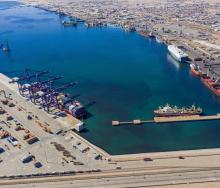Nearly 50% more crude oil and oil products have been shipped around the Cape of Good Hope in the first five months of 2024 than the average of 2023, due to the crisis in the Red Sea.
Attacks by Yemen-based Houthi militants in late 2023 prompted many commercial vessel operators to seek alternatives to the Bab el-Mandeb Strait and the Red Sea, the waterways off Yemen’s coast.
An analysis by the US Energy Information Administration (EIA) shows that the volume of crude oil and oil products flowing around the Cape, in both directions, rose to 8,7 million barrels per day from January to May 2024, compared to 5,9 million per day in 2023.
The Middle Eastern crude oil producers Saudi Arabia and Iraq sent more crude oil around the Cape west-bound to Europe than through the Suez Canal, which is accessed by the Red Sea and Bab el-Mandeb to the south.
This increased trade flow volume made up 15% of the total increase between the average of 2023 and January through May of 2024, according to the EIA.
Asian and Middle Eastern refiners increased their oil product exports to Europe and diverted cargoes west-bound around the Cape, representing 29% of the increased volumes rounding the peninsula.
The United States received both crude oil and oil products from the Middle East and Asia, and sent more oil products to Asia, around the Cape. Total US trade around the region increased by about one-third, or just over 600,000 barrels per day, in the first five months of 2024, from the 2023 average.
Russia sent nearly four times as much crude oil and oil products, including volumes from the Caspian Pipeline Consortium, to Asia around the Cape in the first five months of 2024 than in 2023, as a whole.
A journey from the Arabian Sea to Europe around southern Africa is about 15 days longer, or nearly twice the time, than via the Bab-al Mandeb and the Suez Canal.













